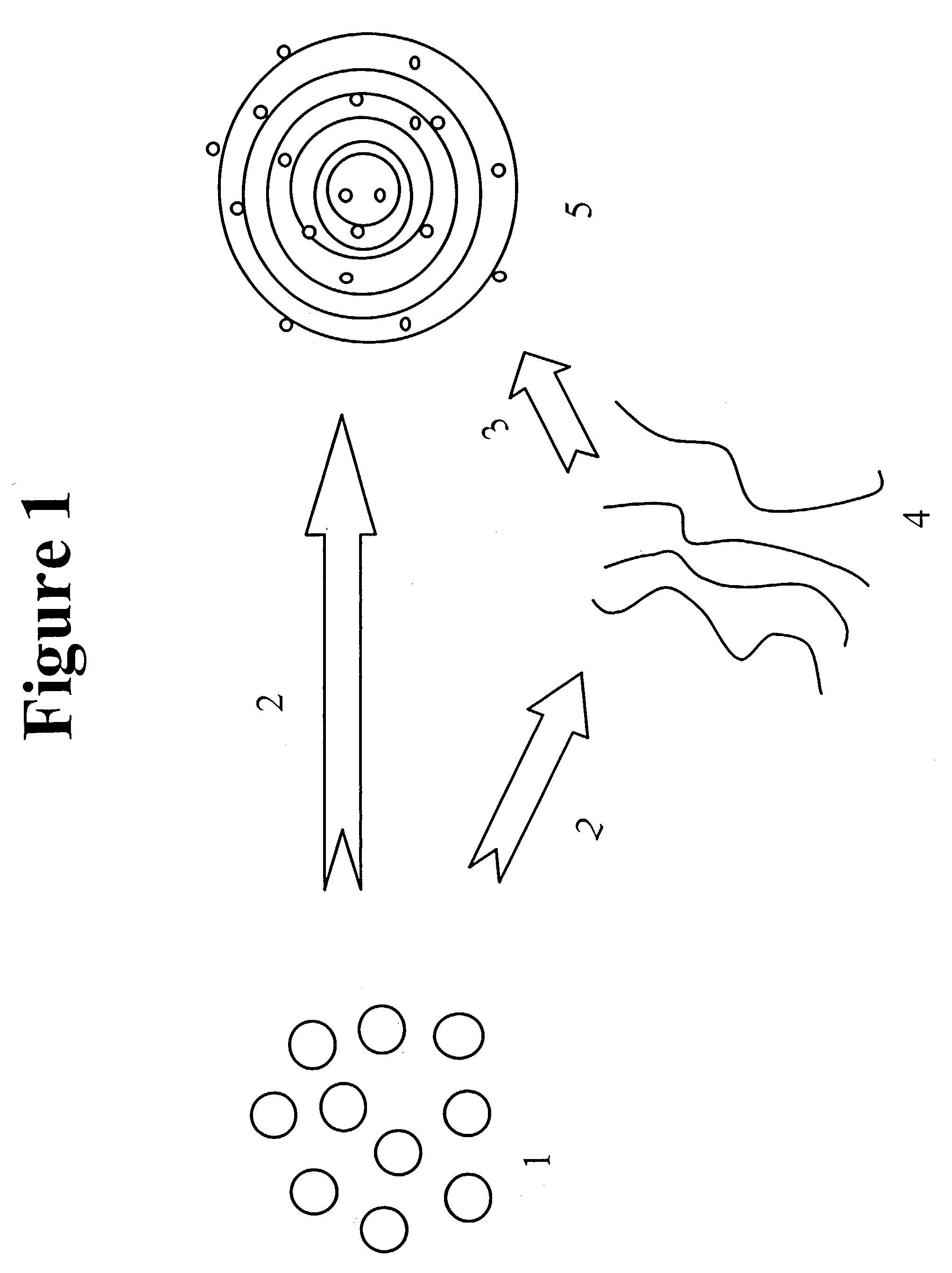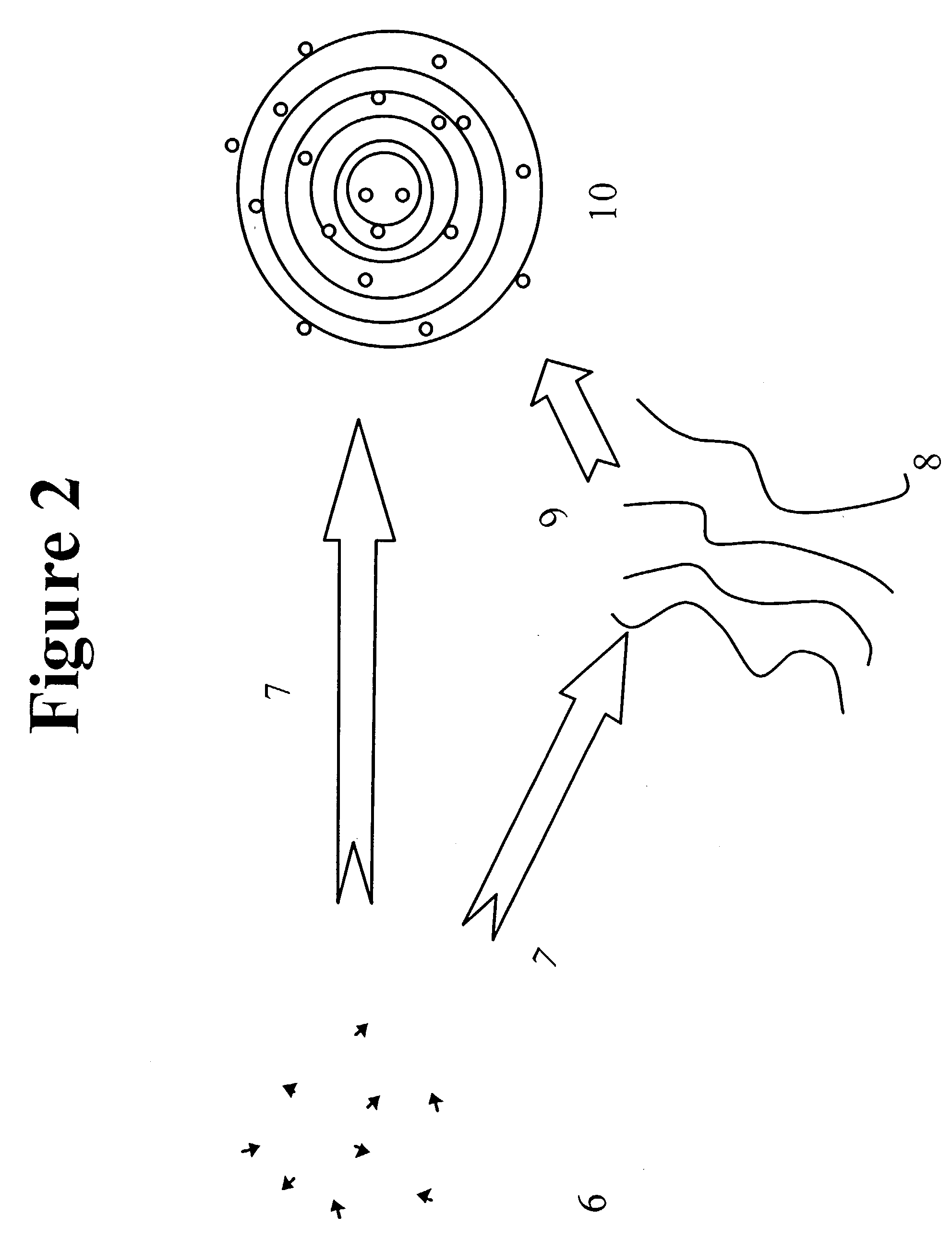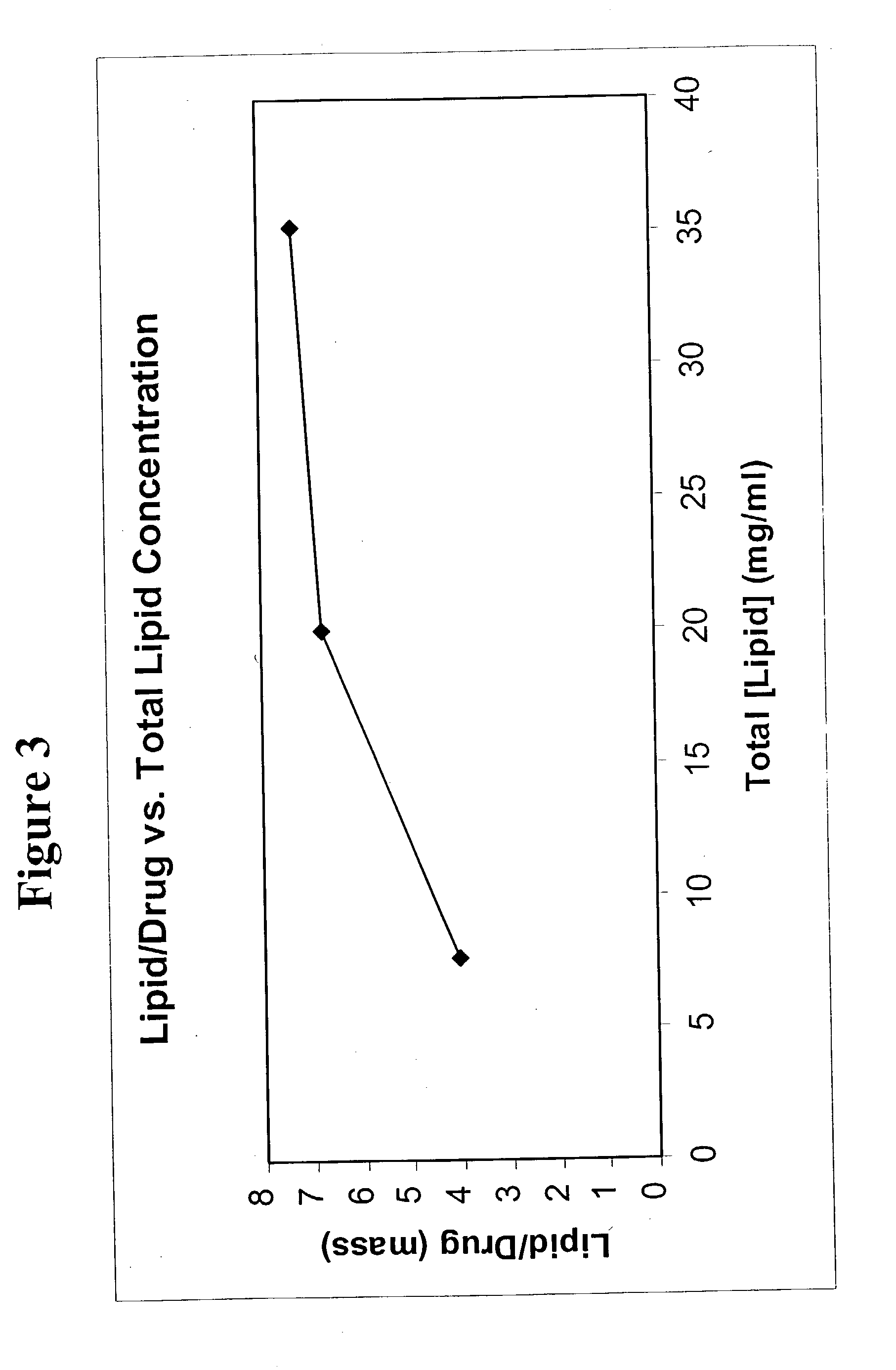Methods for entrapment of bioactive agent in a liposome or lipid complex
a bioactive agent and liposome technology, applied in the direction of antibacterial agents, spray delivery, inorganic non-active ingredients, etc., can solve the problems of high bioactive agent entrapment, process utilizing water immiscible or toxic solvents, and manufacture of liposomal antibacterial agents
- Summary
- Abstract
- Description
- Claims
- Application Information
AI Technical Summary
Benefits of technology
Problems solved by technology
Method used
Image
Examples
second embodiment
[0041] A second embodiment is shown in FIG. 2. The lipids to be employed are dissolved in ethanol to form a lipid-ethanol solution (6). The lipid-ethanol solution is infused in an aqueous or ethanolic solution containing the molecule of the bioactive agent to be entrapped (7). All manipulations are performed below the phase transition of the lowest melting lipid. The mixture immediately forms either extended sheets of lipid (8) or multilamellar vesicles (MLVs).(10) The extended sheets of lipid will form MLVs upon removal of ethanol (9) by either sparging or washing by such methods as centrifugation, dialysis or diafiltration. The MLVs will range in diameter from approximately 0.1 to approximately 3.0 .mu.m.
[0042] In a preferred embodiment of the invention the concentration of the lipid ethanol solution is less than 50 mg / mL. In a more preferred embodiment the concentration of the lipid-ethanol solution is less than 30 mg / mL.
[0043] In another preferred embodiment dialysis is performe...
example 1
Process for Encapsulating Amikacin
[0053] 7.47 g DPPC and 3.93 g cholesterol were dissolved directly in 352.5 mL ethanol in a 50 C water bath. 85.95 g amikacin sulfate was dissolved directly in 1147.5 mL PBS buffer. The 57.3 mg / ml amikacin sulfate solution was then titrated with 10M NaOH or KOH to bring the pH to approximately 6.8.
[0054] 352.5 mL of a 32.3 mg / ml ethanol / lipid solution was added or infused to the 1147.5 mL amikacin / buffer to give a total initial volume of 1.5 L. The ethanol / lipid was pumped at 30 mL / min (also called infusion rate) with a peristaltic pump into the amikacin / buffer solution which was being rapidly stirred at 150 RPM in a reaction vessel on a stir plate at 25 degrees Celsius
[0055] The product was stirred at 25 degrees Celsius for 20-30 minutes.
[0056] The mixing vessel was hooked up to a peristaltic pump and diafiltration cartridge. The diafiltration cartridge is a hollow membrane fiber with a molecular weight cut-off of 500 kilodaltons. The product was pu...
example 1a
[0057] The process was repeated using 20.0 mg / mL lipid / ethanol solution and 35.2 mg / mL lipid ethanol solution. The lipid to drug ratio increased as the lipid solution concentration increased. (FIG. 3)
PUM
| Property | Measurement | Unit |
|---|---|---|
| Temperature | aaaaa | aaaaa |
| Temperature | aaaaa | aaaaa |
| Concentration | aaaaa | aaaaa |
Abstract
Description
Claims
Application Information
 Login to View More
Login to View More - R&D
- Intellectual Property
- Life Sciences
- Materials
- Tech Scout
- Unparalleled Data Quality
- Higher Quality Content
- 60% Fewer Hallucinations
Browse by: Latest US Patents, China's latest patents, Technical Efficacy Thesaurus, Application Domain, Technology Topic, Popular Technical Reports.
© 2025 PatSnap. All rights reserved.Legal|Privacy policy|Modern Slavery Act Transparency Statement|Sitemap|About US| Contact US: help@patsnap.com



